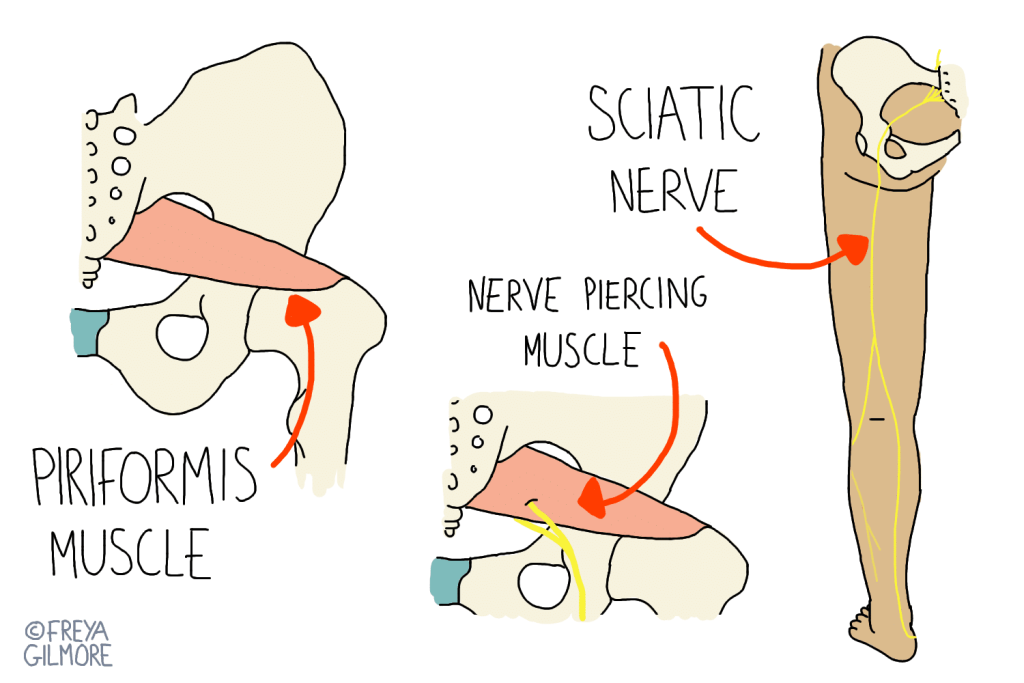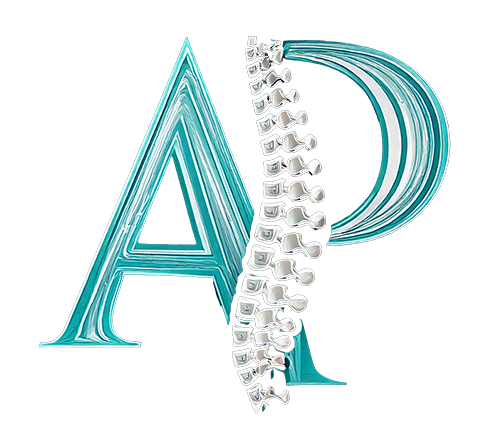Piriformis Syndrome
Piriformis Syndrome is a form of sciatica. By definition, sciatica is irritation of the sciatic nerve. The piriformis is a deep muscle in the buttocks, and when it’s tight it can irritate the sciatic nerve.

It’s not always possible to tell exactly where sciatica originates from. It could be from the back, in the form of a disc bulge, or it could be further down the leg. Sometimes it’s irritated in two places: a double crush. If we can be sure what’s causing the pain, we can work in a more targeted way.
One place that can be easier to identify as a cause is the buttock. There may be some movements that clearly exacerbate symptoms, or something in the way it started that tells your osteopath what’s involved.
Sciatic Nerve Irritation
When a nerve is irritated, it can become inflamed. This might lead to symptoms such as:
- pins and needles
- numbness
- pain in a defined line following the nerve
Just like we all look unique on the outside, we have difference inside too. Some people have a sciatic nerve that just runs close to piriformis, but others will have a nerve that pierces the muscle. Neither is a problem in itself, but there are theories that the latter group might be more susceptible to developing the condition.
What Can Cause Piriformis Syndrome?
Straight forward piriformis syndrome is due to a tight piriformis muscle. This might be due to:
- change in centre of gravity, such as pregnancy
- sudden increased demand on the buttock, like starting an intensive new exercise
- compensation after an injury
Management
Effective management involves breaking the pain-protection cycle, in which the muscle gets tighter because of the pain. Of course, this cycle only gets worse.
Once the reason for the initial tightening has been discovered, that can be addressed to break the cycle and prevent future episodes of the same pain. Then the muscle itself can be treated in clinic and with exercises at home.
Piriformis syndrome responds well to acupuncture or dry needling. Your osteopath may also use massage and stretching techniques on the muscles around the buttock and into the lower back or leg.
The longer the pain has been present, the harder it can be to calm the nerve down. Techniques to target the nerve and reduce the “danger signal” have their place in clinic and in your home exercises. By addressing both parts of the cycle, we plan to get you back to normal as soon as possible.
If you have the symptoms of piriformis syndrome, don’t suffer another day. Book an appointment online.

